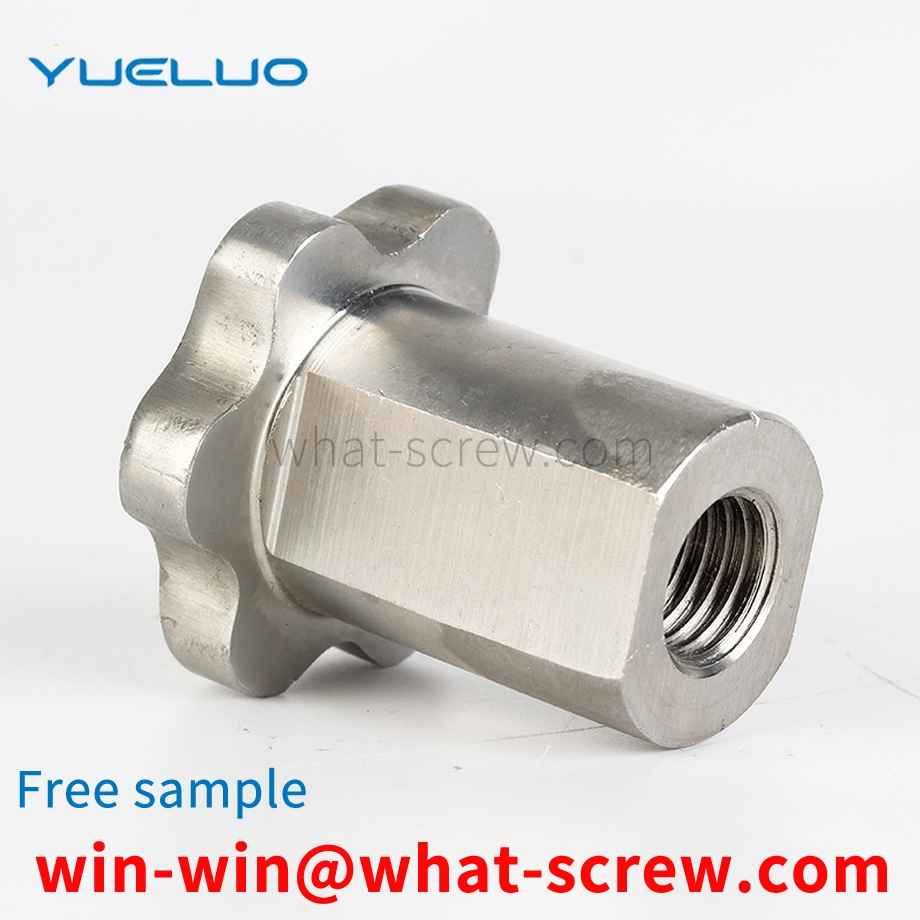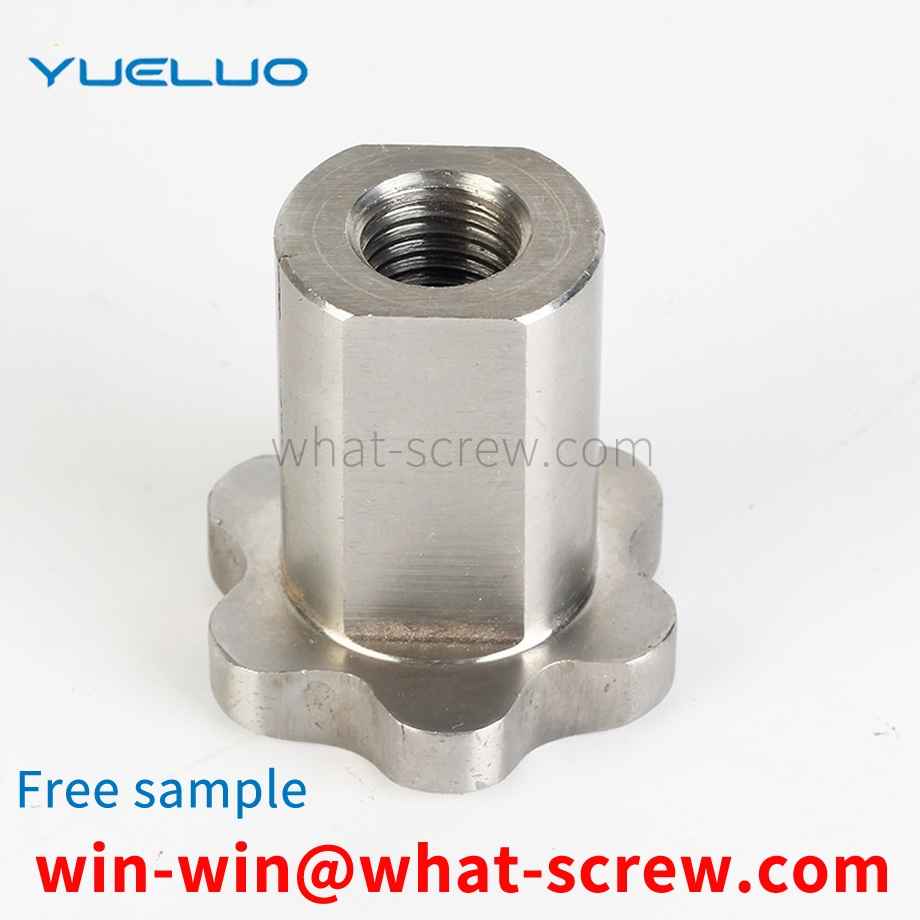The quality of electroplating is measured primarily by its corrosion resistance, followed by appearance. Corrosion resistance is to imitate the working environment of the product, set it as the test condition, and perform a corrosion test on it. The quality of electroplating products shall be controlled from the following aspects: 1. Appearance: Partial uncoated, scorched, rough, gray, peeling, crusted, and obvious stripes are not allowed on the surface of the product, and pinholes, pitting, and black plating are not allowed. Slag, loose passivation film, cracks, peeling off and serious passivation marks. 2. Coating thickness: The operating life of fasteners in corrosive atmosphere is proportional to its coating thickness. The general recommended thickness of economical electroplating coating is 0.00015in ~ 0.0005in (4 ~ 12um). Hot-dip galvanizing: the standard average thickness is 54 um (43 um for diameter ≤ 3/8), and the minimum thickness is 43 um (37 um for diameter ≤ 3/8). 3. Coating distribution: With different deposition methods, the aggregation method of the coating on the surface of the fastener is also different. During electroplating, the coating metal is not uniformly deposited on the peripheral edge, and a thicker coating is obtained at the corners. In the threaded portion of the fastener, the thickest coating is located on the thread crest, gradually thinning along the flank of the thread, and the thinnest deposit is at the bottom of the thread, while hot dip galvanizing is just the opposite, the thicker coating is deposited on the inside corners and On the bottom of the thread, mechanical plating tends to deposit the same metal as hot-dip plating, but is smoother and has a much more uniform thickness over the entire surface [3]. 4. Hydrogen embrittlement: During the processing and processing of fasteners, especially in the pickling and alkali washing before plating and the subsequent electroplating process, the surface absorbs hydrogen atoms, and the deposited metal coating then traps hydrogen. When the fastener is tightened, the hydrogen is transferred towards the most stressed parts, causing the pressure to build up beyond the strength of the base metal and producing microscopic surface cracks. Hydrogen is particularly active and quickly seeps into the newly formed fissures. This pressure-rupture-penetration cycle continues until the fastener breaks. Usually occurs within a few hours after the first stress application. To eliminate the threat of hydrogen embrittlement, fasteners are heated and baked as soon as possible after plating to allow hydrogen to seep out of the plating, typically at 375-4000F (176-190C) for 3-24 hours. Since mechanical galvanizing is non-electrolyte, this virtually eliminates the threat of hydrogen embrittlement, which exists in galvanizing using electrochemical methods. In addition, due to engineering standards, it is forbidden to hot-dip galvanize fasteners with hardness higher than HRC35 (Imperial Gr8, metric 10.9 and above). Therefore, hydrogen embrittlement rarely occurs in hot-dip plated fasteners. 5. Adhesion: Cut or pry off with a solid tip and considerable pressure. If, in front of the blade tip, the coating peels off in flakes or skins, exposing the base metal, the adhesion shall be considered insufficient.
The quick-install and quick-release nut uses the threaded block to move radially and axially along the inclined surface at the same time to achieve the cohesion and separation of the threaded block. However, the nut has a complex structure and is difficult to manufacture, and the internal and external threads may not be properly locked during use. Occurs, bearing capacity and reliability are poor.
There are many names for bolts, and everyone may have different names. Some people call them screws, some people call them bolts, and some people call them fasteners. Although there are so many names, they all mean the same thing, they are all bolts. A bolt is a generic term for a fastener. A bolt is a tool that uses the physical and mathematical principles of the oblique circular rotation and friction of an object to fasten the parts of the object step by step. [1] Bolts are indispensable in daily life and industrial production. Bolts are also known as the rice of industry. It can be seen that the bolts are widely used. The application scope of bolts includes: electronic products, mechanical products, digital products, electrical equipment, electromechanical products. Bolts are also used in ships, vehicles, hydraulic engineering, and even chemical experiments. Anyway, bolts are used in many places. Especially the precision bolts used in digital products. Miniature bolts for DVD, cameras, glasses, clocks, electronics, etc.; general bolts for televisions, electrical products, musical instruments, furniture, etc.; large bolts and nuts are used for engineering, construction, and bridges; transportation equipment, aircraft, trams, automobiles etc. are used together with large and small bolts. Bolts have important tasks in industry. As long as there is industry on the earth, the function of bolts will always be important.
The surfaces of the existing door panels are spliced together by fasteners such as nails and bolts. For example, a door body structure for a production line disclosed in CN203807555 is used for the doors of each chamber of the coating production line. The size of the mechanism is the same, and the left and right sides of the door body can be freely opened and closed; the chamber door and the door frame are detachably connected by multiple sets of sealing components, and the sealing components include hinge devices and locking parts.
Existing wood screws are composed of a threaded portion with a tapered angle and arranged along a tapered stem and a screw head. The head of the screw can be a countersunk head, hemispherical, or other shapes, and the head of the screw has a groove that fits with the tool, a word groove, and a concave cross groove. The taper angle of existing wood screws is either 45 degrees or 60 degrees, and the front end of the taper angle is a pointed point formed by a rotating thread. The existing wood screws have the following three deficiencies in use. Because the taper angle is 45 degrees or 60 degrees, and the thread angle is 71 degrees, the resistance when entering the material is relatively large, so the existing wood screws are manually screwed. It is difficult to screw in, especially when it is used for hardwood materials, and it often happens that the groove of the screw head is screwed out; A large lateral moment will be formed when the screw is screwed, which is prone to the problem of deviation from the position; in addition, because the existing screw is tapered, it will be subjected to both radial force and axial force when entering the material, and its stress state It is more complicated, so it is easy to cause the cracked wood material to burst, and even cause the material to have longitudinal cracks and be unusable.
We have many years of experience in the production and sales of screws, nuts, flat washers, etc. The main products are: elastic washers, thin metal washers, GB838 screws, PP polypropylene DIN933 screws and other products, we can provide you with suitable tightening Firmware Solutions.



















 Service Hotline
Service Hotline




